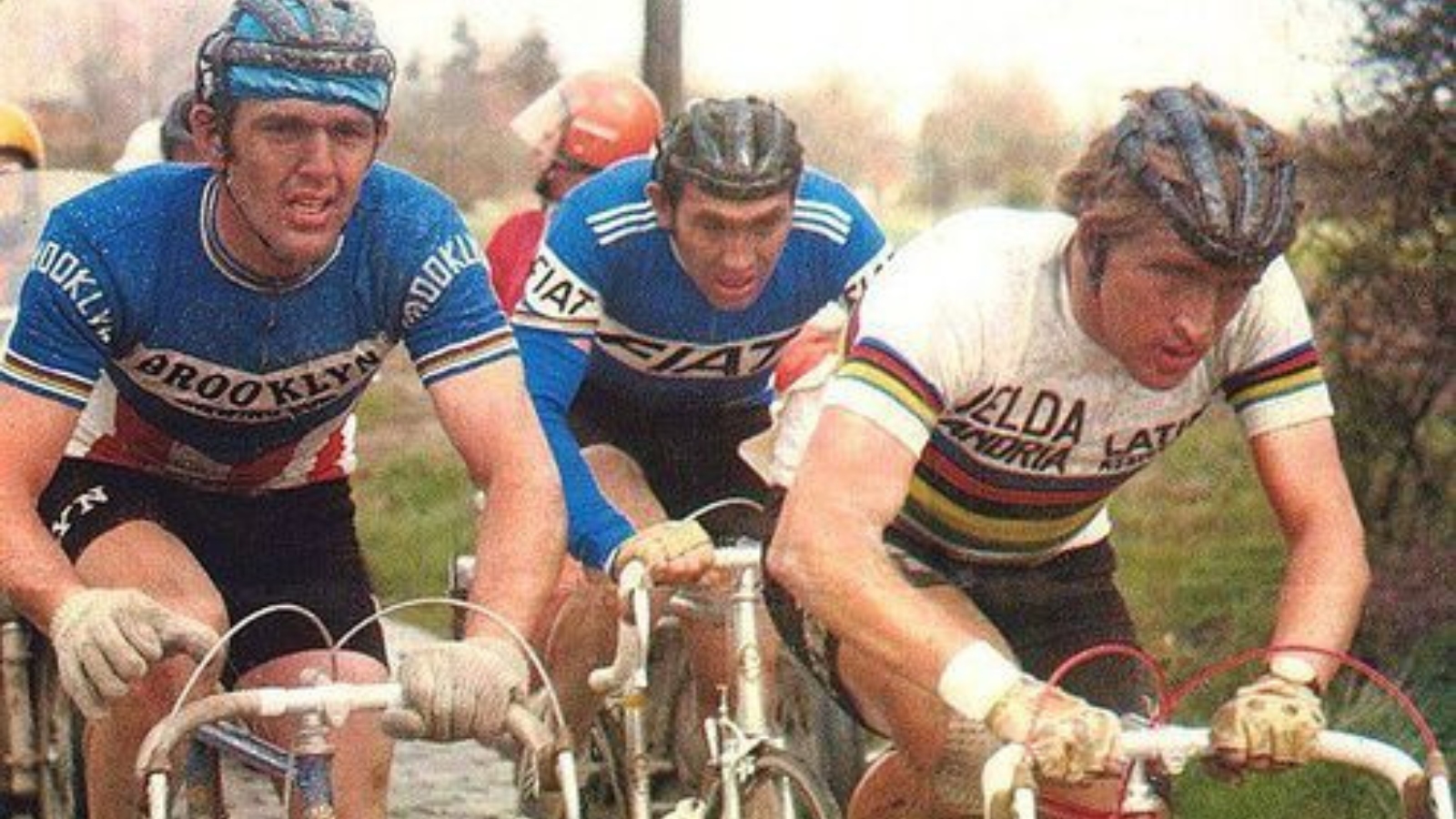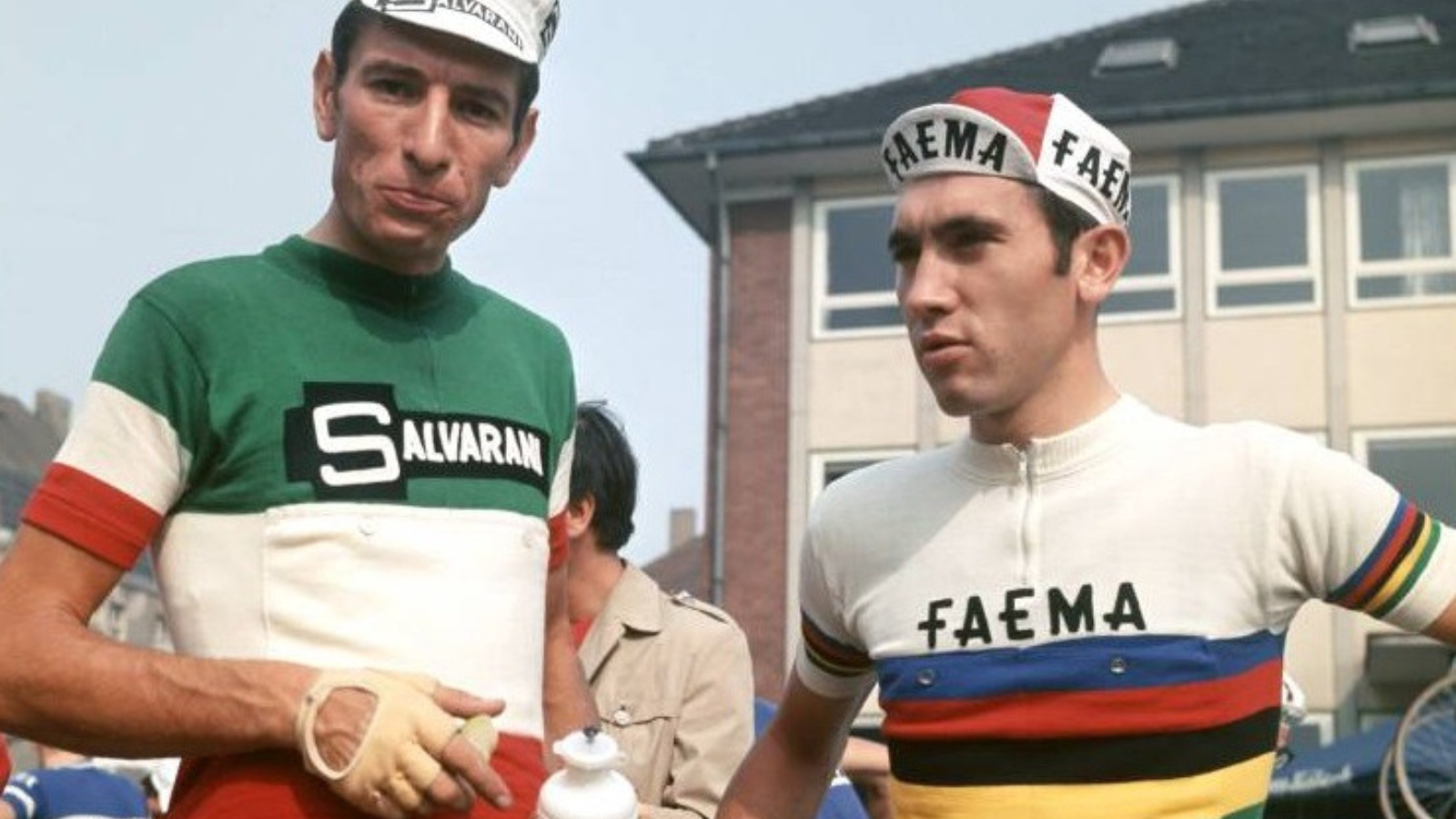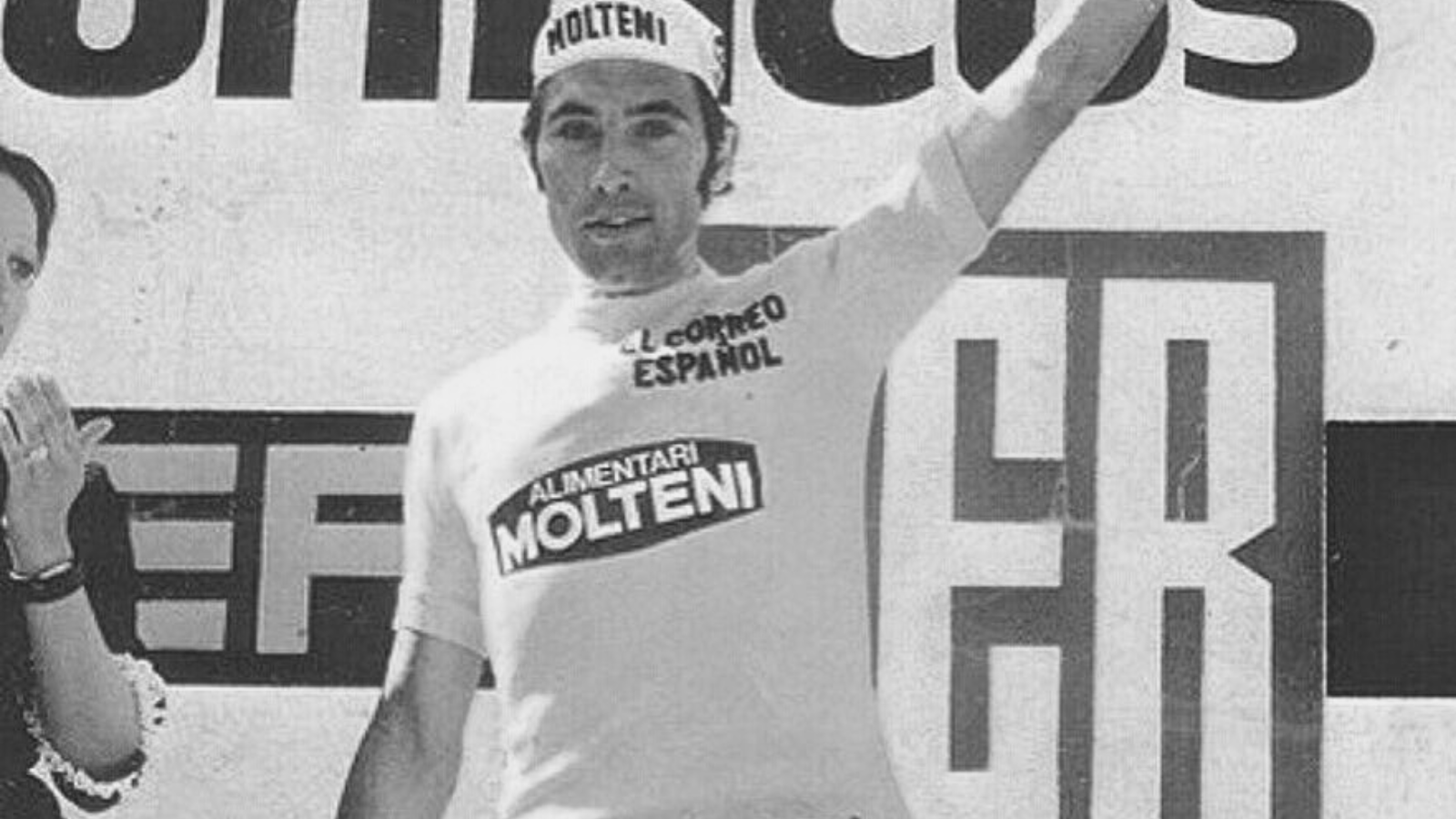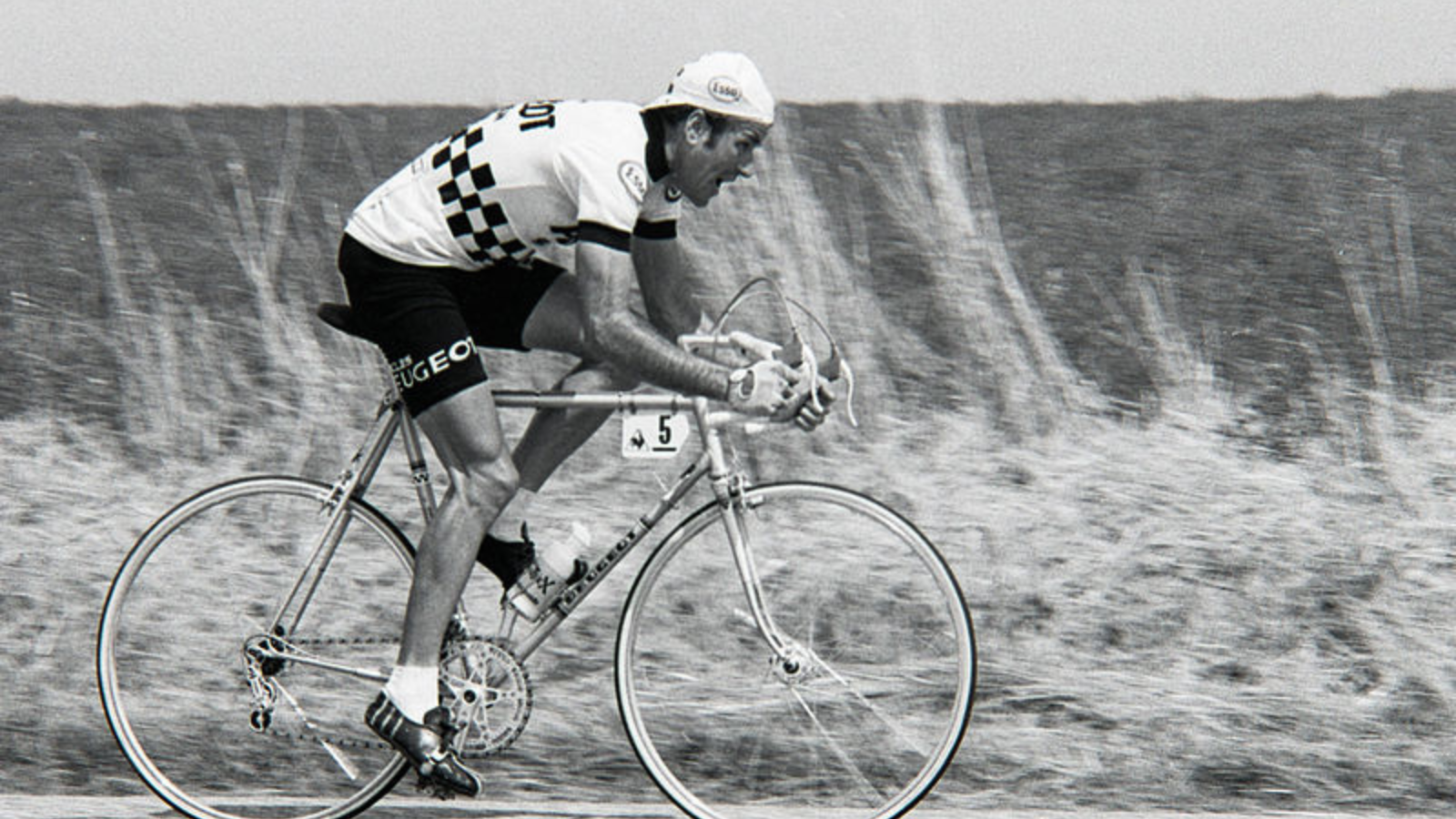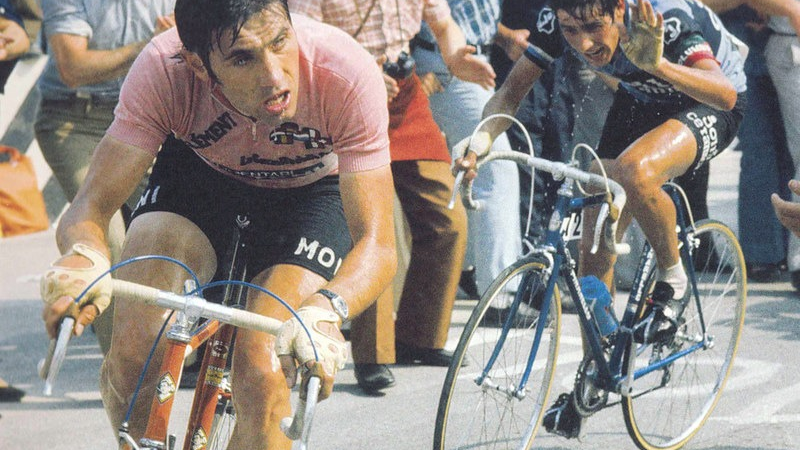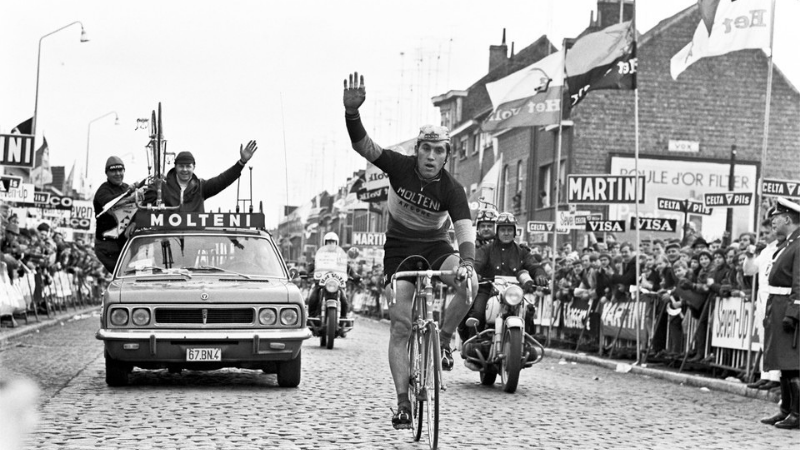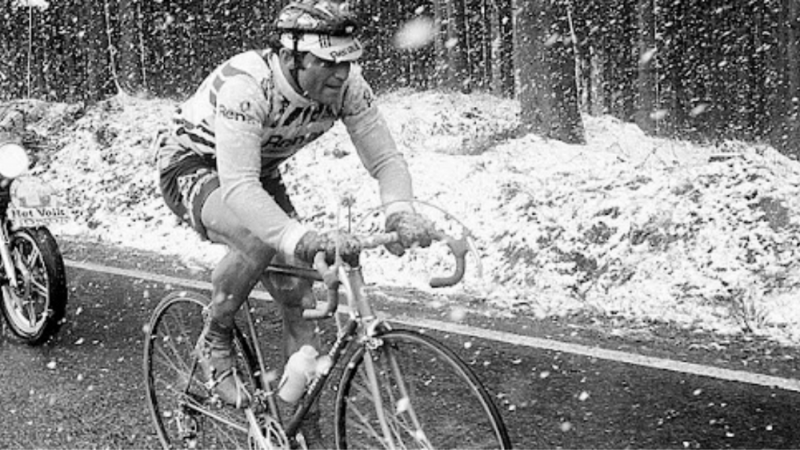Belgian one-day specialist Roger De Vlaeminck is the third cyclist in road cycling history who managed to win all the five monuments at least once during his career.
Before the season 1977 he already had 3 Paris-Roubaix (1972, 1974, 1975, meanwhile his historical 4th one he managed to win two weeks after his Ronde van Vlaanderen triumph), a Milano-Sanremo (1972, two others came in 1978 and 1979), a Liege-Bastogne-Liege (1970) and two Giro di Lombardia (1974, 1976) victories. One the morning of 3rd April 1977, at the start of Ronde van Vlaandeen (Tour of Flanders) there was only one piece missing from his collection.
He participated Rode van Vlaanderen every year since 1972 and his best result was a 4th place from previous year, when Koppenberg was introduced to the race. The fact that only five riders ( Roger De Valeminck, Freddy Maertens, Walter Planckaert, Marc Demeyer and Franceso Moser) managed to ride it from the bottom to the top and were able to escape from the rest of the peloton indicated that the changing landcape of the race could change also the chances of "The Gipsy".
Nevertheless, the race what he won on that sunny spring day in 1977 might not have been among the most pleasant memories of De Vlaeminck.
The 61st edition of Ronde was marred by controversies.
Learning from his bad experiences with Koppenberg during the previous edition, Eddy Merckx attacked early. He was joined by Roger de Vlaeminck and Freddy Maertens.
With 70 km to go, Merckx dropped, and De Vlaeminck rode the remaining part of the course behind the wheels of Maertens, then in the finish outsprinted him.
During the podium ceremony De Vlaeminck was booed because of his lack of contribution during those last part of the race. The two protagonists of the story have two different versions of what happened. Maertens claimed that he was told by a jury member that because of an illegal bike change on the Koppenberg, he would be disqualified anyway. But De Valeminck persued him with a 300K Belgian francs offer to continue the race and help him.1 Meanwhile De Vlaeminck stated that he was riding behind the other's wheel only for tactical reasons, because he knew that Maertens was the better sprinter.
A story did a (not so much) unexpected turn when Maertens and the third placed Walter Planckaert were tested positive and therefore disqualified.
Roger De Vlae!inck continued to paeticipate Ronde van Vlaanderen untill 1982. He had another 4th placec in 1980. Interesting fact, that all the Ronde he started, he also finished.
MORE CYCLING FROM THE 1970S
Felice Gimondi – a career in the shadow of Eddy Merckx (?)
Despite his career almost perfectly overlaps the years when Eddy Merckx was active, Felice Gimondi (1942-2019) managed to win pretty much everything. Gimondi is one of the few riders won all the three grand tours at least once, he also gained the rainbow jersey and won three different monuments. Gimondi and the grand tours Felice … Read more
Faces from the peloton: Raymond Delisle (1943-2013)
Raymond Delisle was one of those cyclists who was always lurking around the favourites in the most important and/or most iconic Tour de France stages without having significant success. Delisle started his professional career in 1965 in team Peugeot, where he was racing till 1976. (His last year as professional cyclist he spent with the … Read more
MORE STARS FROM. THE 1970S
Cyclists led the Giro d’Italia general classification from start to finish
There are only four riders who led the general classification of Giro d’Italia thtough the entire race. Although the number of days they spent in leadeship differs due to the different stucture of the race though the years. Costante Girardengo 1919 (10 stages) During the first edition of Giro d’Italia after World War I Girardengo … Read more
25 March 1971 Eddy Merckx wins Omloop Het Volk
You might wonder why an edition of Omloop Het Nieuwsblad (or as it was called back in those day, Omloop Het Volk) was held so late in the spring classic calendar. The Omloop is one of the earliest races of the season, it always has been, because the creators of the competition wanted to have … Read more
Bernard Hinault’s epic solo ride in the snow (Liège-Bastogne-Liège 1980)
On the afternoon of the 20th April 1980, while a little girl, called Anita Pethő ( the author of PelotonTales blog) was born in a small town in North-West Hungary, on the other part of Europe, in Belgium, Bernard Hinault delivered one of the most iconic victories in the history of the Monuments. Snow can … Read more
- According to the book of Peter Cossins about the monuments, there was a meeting for the heads of the teams the day before the race, but Maerten's manager Lomme Driessens did not bother to turn up, thus they did not know that a bike change on Koppenberg was not allowed. See more: Peter Cossin: The Monuments. The Grit and Glory of Cycling's Greatest One-Day Races. Bloomsbury Sport (2023) [↩]
- and no one should ever win, because we don’t want a peloton where only one rider is so overwhelmingly dominant, do we? [↩]
